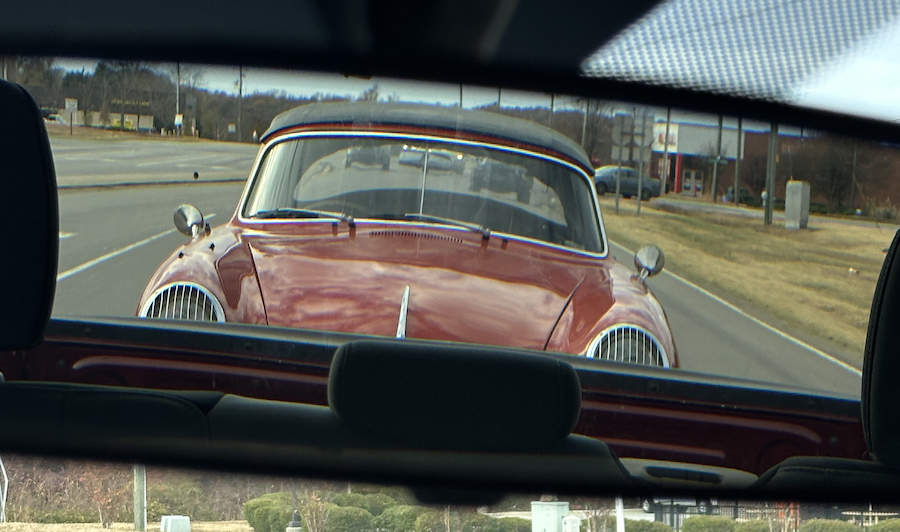
The Great Race is in 53 days! What did we get ourselves into?
We went to Rally Rookie school. The seminar was put on by the organizers of the Great Race Rally. The idea was to explain the basic ideas behind how the time, speed, distance rally works.
We are more confused than ever! Not that the teacher didn’t do a good job. They did. But the seminar really opened our eyes to how much goes into performing well in the event.
The goal of a time, speed, distance rally is to cover the distance, as outlined in the “course” instructions, as close the “course” designer as possible. Except, you don’t know what that time is. Instead, you are given driving instructions. The instructions provide turn-by-turn directions as to the route you are to take. It also provides information related to the directed speed, how long you can stop at stop signs, traffic lights, and other things you will encounter along the way. Keep in mind, though, that the “course” is public roads. So you aren’t on a closed-course. There are cars, people, bicyclists, buses, dump trucks . . . . In other words, it is hard to predict much at all.
And through these normal driving “obstacles,” over the course of 9 days, each team tries to follow the race instructions exactly, in an effort to match the “course” designer’s time to the hundredth of a second. The top three teams last year all matched the “ideal” time to less than 1 minute. Thousands of miles across the United States, over 9 days, and 41.31 seconds “out of time” won the event. You can see the 2020 daily “scores” HERE.
Let’s be realistic here. Julie and I did not sign up with a goal to win the race. In fact, she thought we were going on a “little road trip” when she agreed to go with me a year ago. It was only a couple months later that I told her I signed us up in Charlie, our 1969 Porsche 912. Which, by the way, has no air conditioning. Over the course of the year, however, our competitive instincts have started to flow. Now, with less than 2 months until the rally begins, we want to do our best. Whatever that means. There will be other “rookies,” right? Certainly we can beat them. Right?
At first glance, it doesn’t appear that difficult. Each day’s instructions provide turn-by-turn directions, as well as the speed you should be traveling. Simply follow the directions. No big deal. Right?
Here are sample instructions provided as an example in the Rookie Handbook.

There are a few needling little problems, though. First, following instructions isn’t my strong suit. I let me own logic enter the scene, and out the window (no pun intended) go the instructions. But, aside from that, not all cars accelerate and decelerate at the same rate. And not all cars hold a constant speed, predicted ahead of time, around every corner. We don’t know what the “course” designer drove to figure the rally out when it was originally designed. And we don’t know how fast his or her car accelerated, decelerated, or any details that are unique to the vehicle.
If the specific route you are to take, right down to where to turn, and your intended speed is given in the instructions, it seems to me that the difference between winning and losing comes down to 4 factors:
- Following the turn-by-turn instructions. In other words, don’t miss a turn, and by all means, don’t get lost.
- Holding your speed constant. I am learning that this is a little easier said than done in a 50-year-old, manual transmission, car.
- Accounting for how long its takes to decelerate/accelerate, at every single stop sign, traffic light, and other “obstacle” encountered over the course of 2,500 miles, and making up for the difference in your current location and time, as compared to the “course” designers’.
- Accounting for time lost/gained in the event we don’t hold our speed at the correct constant speed around corners, bearing in mind this includes the smallest turns from a stop sign.
Doesn’t sound too bad. How do we solve this?
Enter Rally Rookie School. Well sorta. It was only a 2-hour seminar, and the first hour addressed more general requirements, like tech inspection, hotels, and food, rather than how we are supposed to magically match an unknown time over thousands of miles. It was still very helpful.
The most important thing we learned was that we don’t know what we are doing. But, hey, sometime it is just as important to know what you don’t know, as what you do. Right? Second, we learned that we need practice. Lots of practice.
Apparently, we need to make some charts. These charts are unique to each car, and provide the driver and navigator precise information as to how long it takes them to decelerate and accelerate, as well as how much time is lost in turns, across a spectrum of speeds.
Here is a sample chart provided in the Rookie Handbook.

Using the charts we are supposed to adjust our time at stops signs, as well as while driving to make up, or burn, time, in an effort to stay on track.
Ok, Sure. No problem.







About The Author: Steve
More posts by Steve